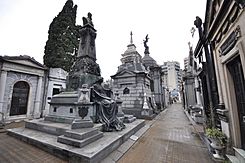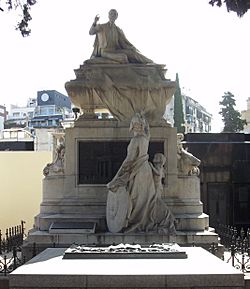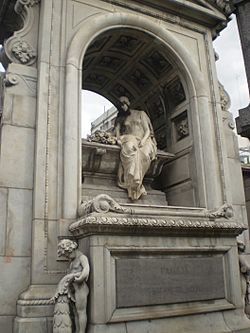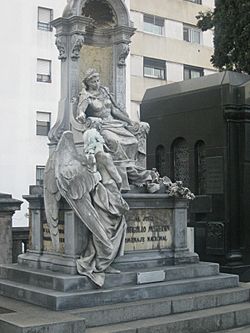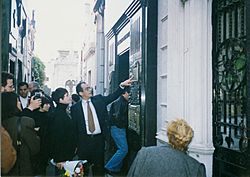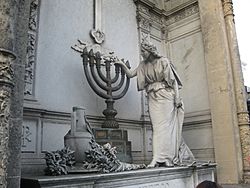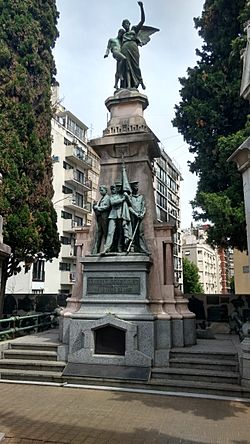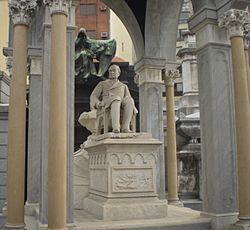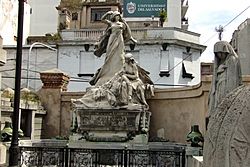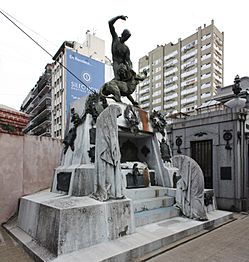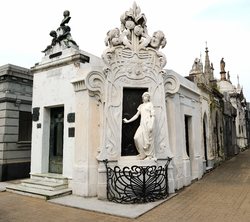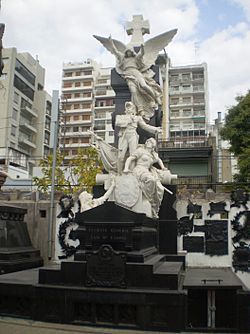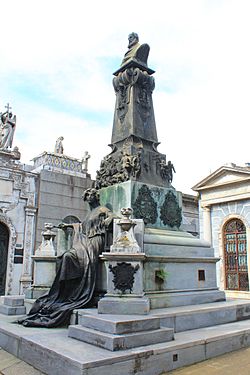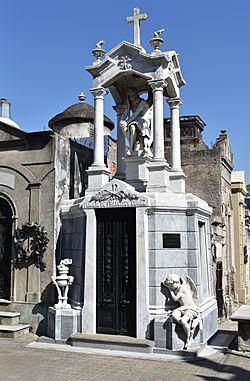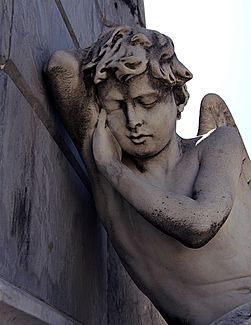La Recoleta Cemetery facts for kids
|
Cementerio de la Recoleta
|
|
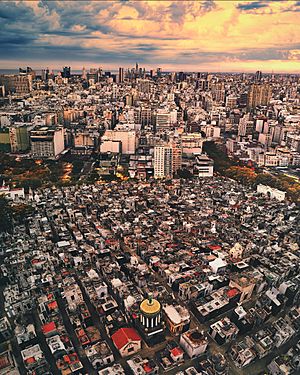
Aerial view of the cemetery
|
|
| Lua error in Module:Location_map at line 420: attempt to index field 'wikibase' (a nil value). | |
| Details | |
|---|---|
| Established | 1822 |
| Location |
Junín 1760, Buenos Aires
|
| Country | Argentina |
| Type | Public |
| Size | 5.5 hectares (14 acres) |
| No. of graves | 4691 vaults |
La Recoleta Cemetery (Spanish: Cementerio de la Recoleta) is a cemetery located in the Recoleta neighbourhood of Buenos Aires, Argentina. It contains the graves of notable people, including Eva Perón, presidents of Argentina, Nobel Prize winners, the founder of the Argentine Navy, and military commanders like Julio Argentino Roca. In 2011, the BBC hailed it as one of the world's best cemeteries, and in 2013, CNN listed it among the 10 most beautiful cemeteries in the world.
Contents
History
Franciscan Recollect monks (los recoletos) arrived in this area, then the outskirts of Buenos Aires, in the early eighteenth century. The cemetery is built around the Recollect Convent (Convento de la Recoleta) and a church, Our Lady of the Pillar (Iglesia de Nuestra Señora del Pilar), built in 1732.
The order was disbanded in 1822, and the garden of the convent was converted into the first public cemetery in Buenos Aires. Inaugurated on 17 November of the same year under the name of Cementerio del Norte (Northern Cemetery), those responsible for its creation were the then-Governor Martin Rodríguez, who would be eventually buried in the cemetery, and government minister Bernardino Rivadavia.
The 1822 layout was done by French civil engineer Próspero Catelin, who also designed the current facade of the Buenos Aires Metropolitan Cathedral. The cemetery was last remodeled in 1881, while Torcuato de Alvear was mayor of the city, by the Italian architect Juan Antonio Buschiazzo.
Description
Set in 5.5 hectares (14 acres), the site contains 4691 vaults, all above ground, of which 94 have been declared National Historical Monuments by the Argentine government and are protected by the state. The entrance to the cemetery is through neo-classical gates with tall Doric columns. The cemetery contains many elaborate marble mausoleums, decorated with statues, in a wide variety of architectural styles such as Art Deco, Art Nouveau, Baroque, and Neo-Gothic, and most materials used between 1880 and 1930 in the construction of tombs were imported from Paris and Milan. The entire cemetery is laid out in sections like city blocks, with wide tree-lined main walkways branching into sidewalks filled with mausoleums. These mausoleums are still being used by rich families in Argentina that have their own vault and keep their deceased there. While many of the mausoleums are in fine shape and well-maintained, others have fallen into disrepair. Several can be found with broken glass and littered with rubbish. Among many memorials are works by notable Argentine sculptors, Lola Mora and Luis Perlotti for instance. The tomb of Liliana Crociati de Szaszak, due to its unusual design, is of special interest.
Notable interments
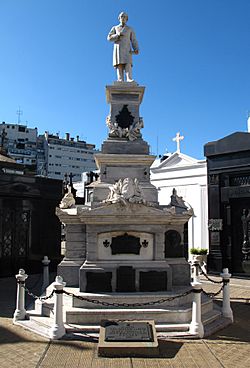
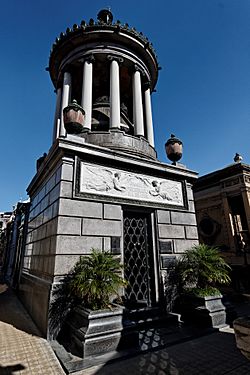
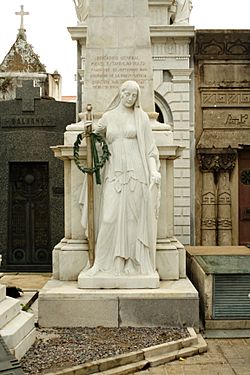

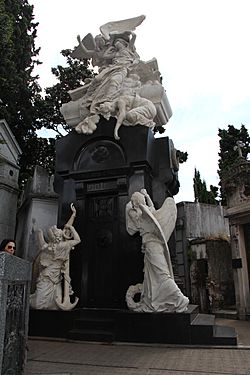
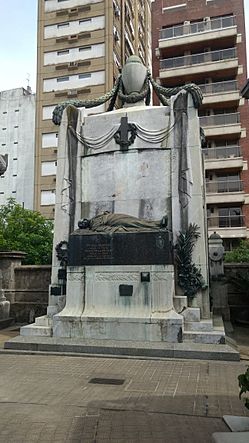
| Birth | Death | Personality | Notes | Ref(s) | |
|---|---|---|---|---|---|
| 1914 | 1999 | 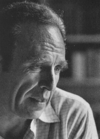 |
Adolfo Bioy Casares | Fiction writer, journalist, translator, and Miguel de Cervantes Prize recipient. | |
| 1876 | 1943 |  |
Agustín Pedro Justo | President of Argentina. | |
| 1921 | 2012 |  |
Amalia Lacroze de Fortabat | Businesswoman and philanthropist. | |
| 1805 | 1871 | 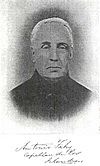 |
Anthony Dominic Fahy | Catholic priest, missionary and head of the Irish community in Argentina (1844–1871) | |
| 1914 | 1981 | 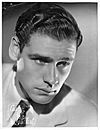 |
Armando Bó | Actor, film director, and screenwriter. | |
| 1900 | 1983 |  |
Arturo Umberto Illia | President of Argentina. | |
| 1821 | 1906 | 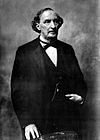 |
Bartolomé Mitre | President of Argentina. | |
| 1840 | 1902 | 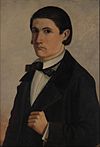 |
Cándido López | Soldier, painter, and student of Italian artist Baldassare Verazzi. | |
| 1827 | 1918 | 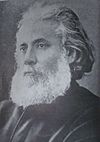 |
Carlos Guido y Spano | Poet. | |
| 1789 | 1852 | 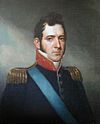 |
Carlos María de Alvear | Soldier, statesman, and Supreme Director of the United Provinces of the Río de la Plata. | |
| 1846 | 1906 | 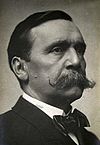 |
Carlos Pellegrini | President of Argentina. | |
| 1878 | 1959 | 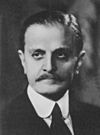 |
Carlos Saavedra Lamas | Academic, politician, and the first Latin American Nobel Peace Prize recipient. | |
| 1759 | 1829 | 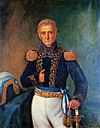 |
Cornelio Saavedra | President of the First Assembly and military officer. | |
| 1758 | 1820 | 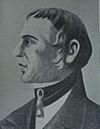 |
Cosme Argerich | Military physician. | |
| 1800 | 1875 | 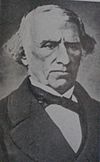 |
Dalmacio Vélez Sársfield | Lawyer, politician, and writer of the Civil Code of Argentina. | |
| 1811 | 1888 | 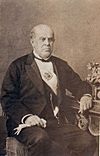 |
Domingo Faustino Sarmiento | President of Argentina. | |
| 1896 | 1956 | 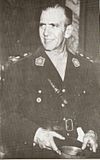 |
Eduardo Lonardi | President of Argentina. | |
| 1903 | 1982 | 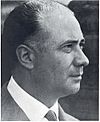 |
Eduardo Mallea | Essayist, cultural critic, writer, and diplomat. | |
| 1844 | 1913 |  |
Eduardo Wilde | Physician, politician, and writer. | |
| 1875 | 1951 |  |
Elpidio González | Politician and Vice President of Argentina. | |
| 1919 | 1952 | 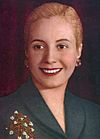 |
Eva Perón | First Lady of Argentina and founder of the Eva Perón Foundation. | |
| 1788 | 1835 | 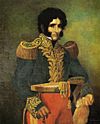 |
Facundo Quiroga | Caudillo and subject of the book Facundo, Domingo Faustino Sarmiento's most prominent work. | |
| 1785 | 1827 | 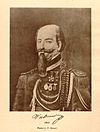 |
Federico de Brandsen | French-born Colonel. | |
| 1835 | 1899 | 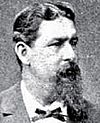 |
Federico Lacroze | Businessman and railway entrepreneur. | |
| 1795 | 1871 | 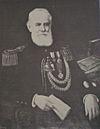 |
Francisco Javier Muñiz | Argentine physician, naturalist and politician | |
| 1821 | 1890 | 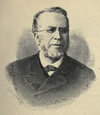 |
Guillermo Rawson | Physician and politician. | |
| 1852 | 1933 | 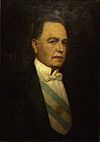 |
Hipólito Yrigoyen | President of Argentina. | |
| 1847 | 1847 | — | Isabelle Colonna-Walewski | Daughter of Count Alexandre Colonna-Walewski and grandchild of Napoleon. | |
| 1842 | 1912 | 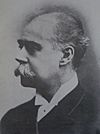 |
José Clemente Paz | Statesman, diplomat, and journalist. | |
| 1860 | 1931 | 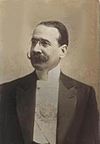 |
José Figueroa Alcorta | President of Argentina. | |
| 1834 | 1886 | 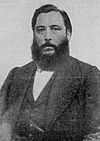 |
José Hernández | Journalist, politician, poet, and creator of Argentina's national epic, the Martín Fierro. | |
| 1910 | 1975 |  |
José María Guido | President of Argentina. | |
| 1758 | 1833 | 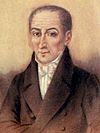 |
Juan José Paso | Politician and member of the First Assembly, the First Triumvirate, and the Second Triumvirate. | |
| 1797 | 1841 | 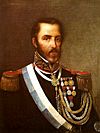 |
Juan Lavalle | General and Governor of Buenos Aires Province. | |
| 1793 | 1877 |  |
Juan Manuel de Rosas | Brigadier and Governor of Buenos Aires Province. Initially buried at Southampton Old Cemetery in the United Kingdom, repatriated in 1989. | |
| 1843 | 1914 | 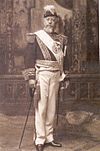 |
Julio Argentino Roca | President of Argentina. | |
| 1841 | 1896 | 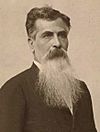 |
Leandro Nicéforo Alem | Politician. | |
| 1874 | 1938 | 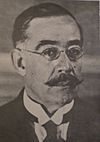 |
Leopoldo Lugones | Writer and journalist. | |
| 1831 | 1913 | 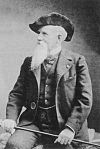 |
Lucio Victorio Mansilla | General, writer, journalist, politician, and diplomat. | |
| 1894 | 1960 | 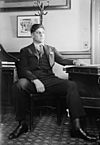 |
Luis Ángel Firpo | Professional boxer and the first Latin American to challenge for the world heavyweight champion title. | |
| 1906 | 1987 | 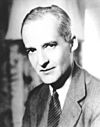 |
Luis Federico Leloir | Biochemist, physician, and the first Spanish-speaking Nobel Prize in Chemistry laureate. | |
| 1838 | 1907 |  |
Luis María Campos | General and founder of the Escuela Superior de Guerra (Superior School of War). | |
| 1822 | 1907 | 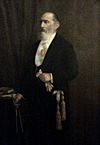 |
Luis Sáenz Peña | President of Argentina. | |
| 1791 | 1871 | 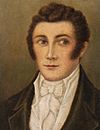 |
Luis Vernet | German-born merchant of Huguenot descent and the first Argentine appointed as Governor of Puerto Luis (nowadays the Falkland Islands). | |
| 1787 | 1828 |  |
Manuel Dorrego | Military officer and Governor of Buenos Aires Province. Mausoleum designed by Carlo Zucchi. | |
| 1835 | 1906 | 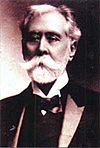 |
Manuel Quintana | President of Argentina. | |
| 1868 | 1942 |  |
Marcelo Torcuato de Alvear | President of Argentina. | |
| 1887 | 1970 | 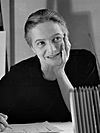 |
Mariette Lydis | Austrian-born painter and illustrator. | |
| 1786 | 1868 | 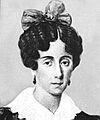 |
Mariquita Sánchez de Thompson | Patriot. | |
| 1922 | 1991 |  |
Martín Karadagian | Actor, professional wrestler, and Wrestling Observer Newsletter Hall of Fame inductee. | |
| 1851 | 1905 | 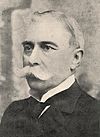 |
Miguel Cané | Writer, lawyer, academic, journalist, and politician. | |
| 1754 | 1833 |  |
Miguel de Azcuénaga | General, politician, and member of the First Assembly. | |
| 1783 | 1849 |  |
Miguel Estanislao Soler | General and politician. | |
| 1837 | 1885 | 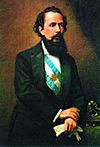 |
Nicolás Avellaneda | President of Argentina. | |
| 1891 | 1967 | 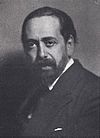 |
Oliverio Girondo | Poet. | |
| 1859 | 1936 |  |
Pablo Ricchieri | Military officer and Minister of War. | |
| 1848 | 1929 | 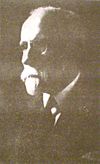 |
Paul Groussac | French-born writer, literary critic, historian, and librarian. | |
| 1903 | 1970 | 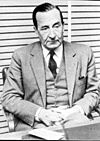 |
Pedro Eugenio Aramburu | President of Argentina. | |
| 1927 | 2009 |  |
Raúl Alfonsín | President of Argentina. | |
| 1926 | 2016 | 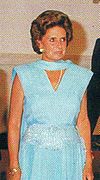 |
María Lorenza Barreneche | First Lady of Argentina. Widow of Raúl Alfonsín. | |
| 1797 | 1823 |  |
Remedios de Escalada | Wife of libertador José de San Martín. | |
| 1851 | 1914 | 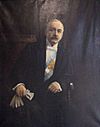 |
Roque Sáenz Peña | President of Argentina. | |
| 1903 | 1993 | Silvina Ocampo | Poet, translator, and writer. | ||
| 1802 | 1869 |  |
Valentín Alsina | Governor of Buenos Aires Province. | |
| 1785 | 1856 | 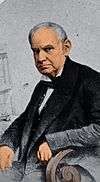 |
Vicente López y Planes | Poet, politician, and creator of the lyrics of the Argentine National Anthem. | |
| 1890 | 1979 | 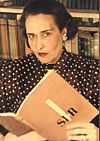 |
Victoria Ocampo | Writer, intellectual, and the first woman admitted to the Argentine Academy of Letters. | |
| 1840 | 1919 |  |
Victorino de la Plaza | President of Argentina. | |
| 1777 | 1857 | 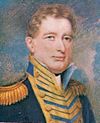 |
William Brown | Irish-born Admiral and founder of the Argentine Navy. | |
| 1856 | 1902 | 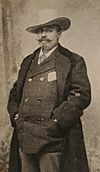 |
Zenón Rolón | Musician and composer. | |
| 1920 | 1999 | 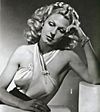 |
Zully Moreno | Actress. | |
See also
 In Spanish: Cementerio de la Recoleta para niños
In Spanish: Cementerio de la Recoleta para niños


